Gaëtan Duculty, head of family-run Maison Duculty is giving a tour of his charcuterie factory. Never mind the language barrier – one can tell he is proud of his family’s heritage as he shares the story of a company that has been making cured meats for five generations since 1816.
The factory is in the village of La Terrasse Sur Dorlay, in the heart of the regional national park of Pilat where fresh air and green rolling hills dominate the landscape. Here, saucisson or dry cured sausages – a Maison Duculty specialty – are made. Duculty carefully explains that the entire process is guided by tradition, based on an unchanging recipe passed down from father to son.
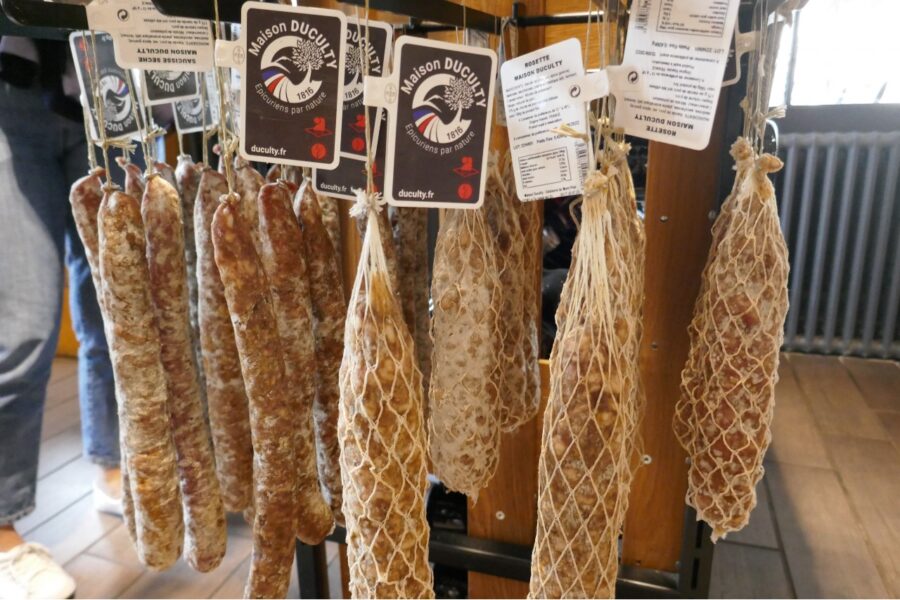
Making dry cured sausages first involves procuring local pork and high quality ingredients. Meat is blended with salt, garlic and pepper, then stuffed into natural pork casings without artificial chemicals. They are then hung on wooden bars and naturally matured for six to 16 weeks in temperature-controlled rooms with air pumped in from the countryside.
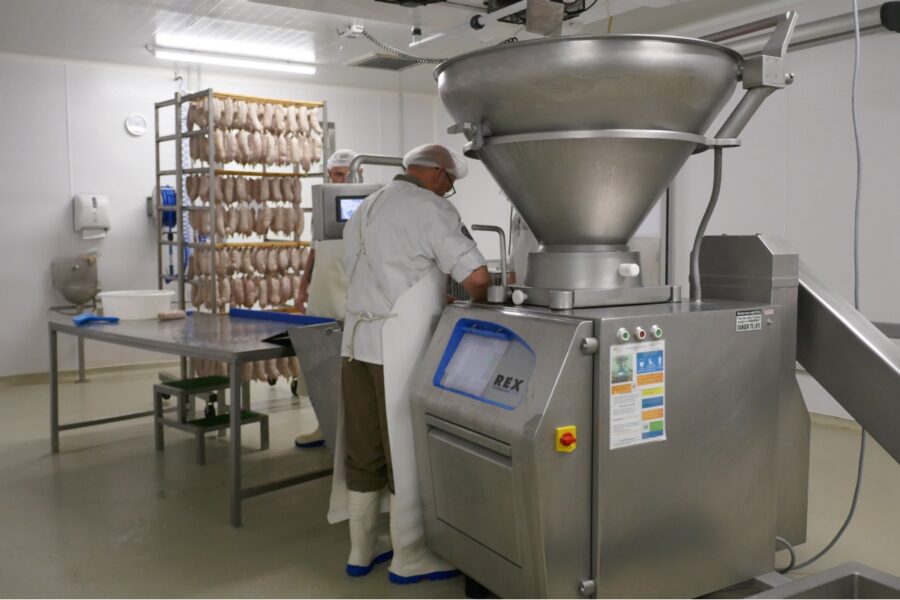
During this time, Penicillium mould starts to grow around the sausages which presents itself as a white, powdery coating on the surface. This mould helps with the maturing process and boosts the aroma and flavour profile of the products.
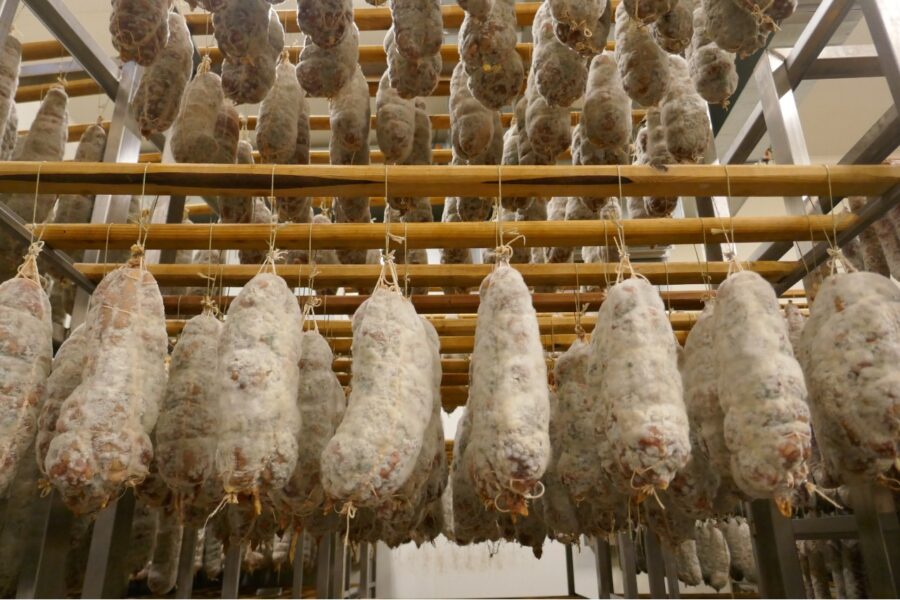
To the uninitiated, especially those who are unfamiliar with traditional European delicatessen, seeing, let alone consuming mould-covered sausages can be a little unsettling – but they are absolutely safe to eat. Often found on traditional charcuterie platters, they are umami-packed, savoury, aromatic and meaty. They are typically eaten in very thin slices, at room temperature, accompanied by bread, cheese and a glass of wine. But most of all, they are best enjoyed with family and friends in moments of conviviality (Maison Duculty’s shop and restaurant, located not far from the factory, is one such place where its cured products can be shared and enjoyed).
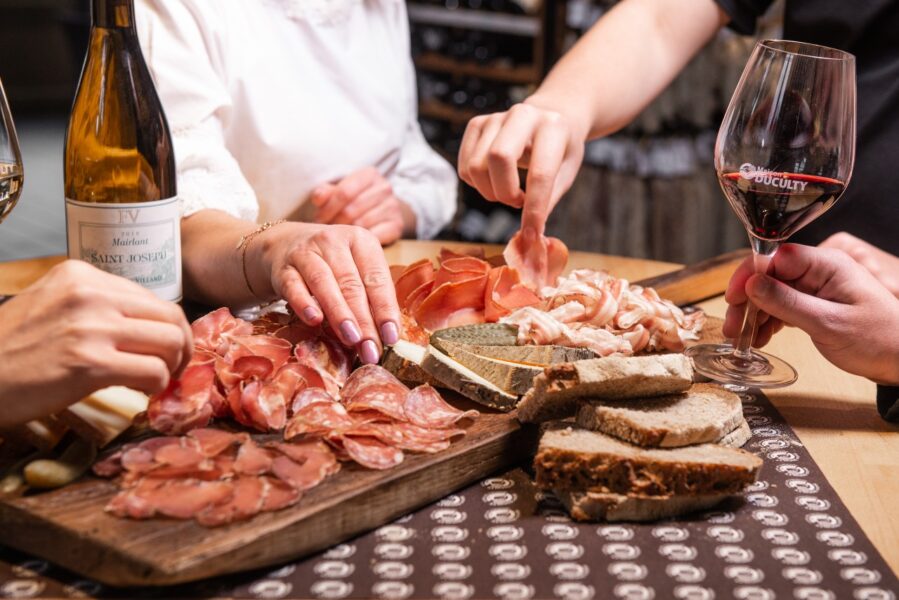
Besides dry cured sausages, Maison Duculty also produces a range of cured ham and cooking sausages. What all of them have in common is that they are made with the same dedication and expertise. It is the reason why the company has held the Master Artisan label since 2014, and has been labelled an Entreprise du patrimoine vivant since 2018. The former rewards companies that produce high quality products with a genuine commitment to the promotion of crafts, while the latter distinguishes companies whose artisanal or industrial experience embody French excellence.
| Europe On A Plate What began as a pre-industrial necessity to extend shelf life of food has become an integral part of France’s culture and heritage. Charcuterie products such as dry cured ham, sausages, terrines and rillettes are produced according to various manufacturing processes inspired by ancestral traditions, from cooking and salting, to drying and smoking. The many regional specialties are home to more than 450 products, each a reflection of its terroir, history and climate. Look out for European official signs such as PDO and PGI that inform consumers of the products’ quality and traceability. For more information, visit www.europeandelicatessenexperience.com. 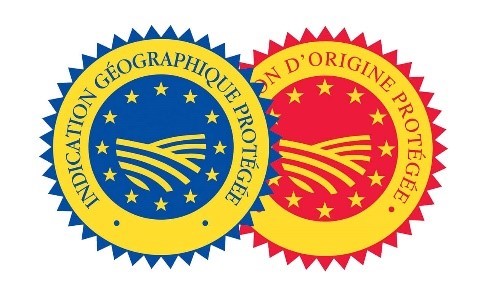 |

